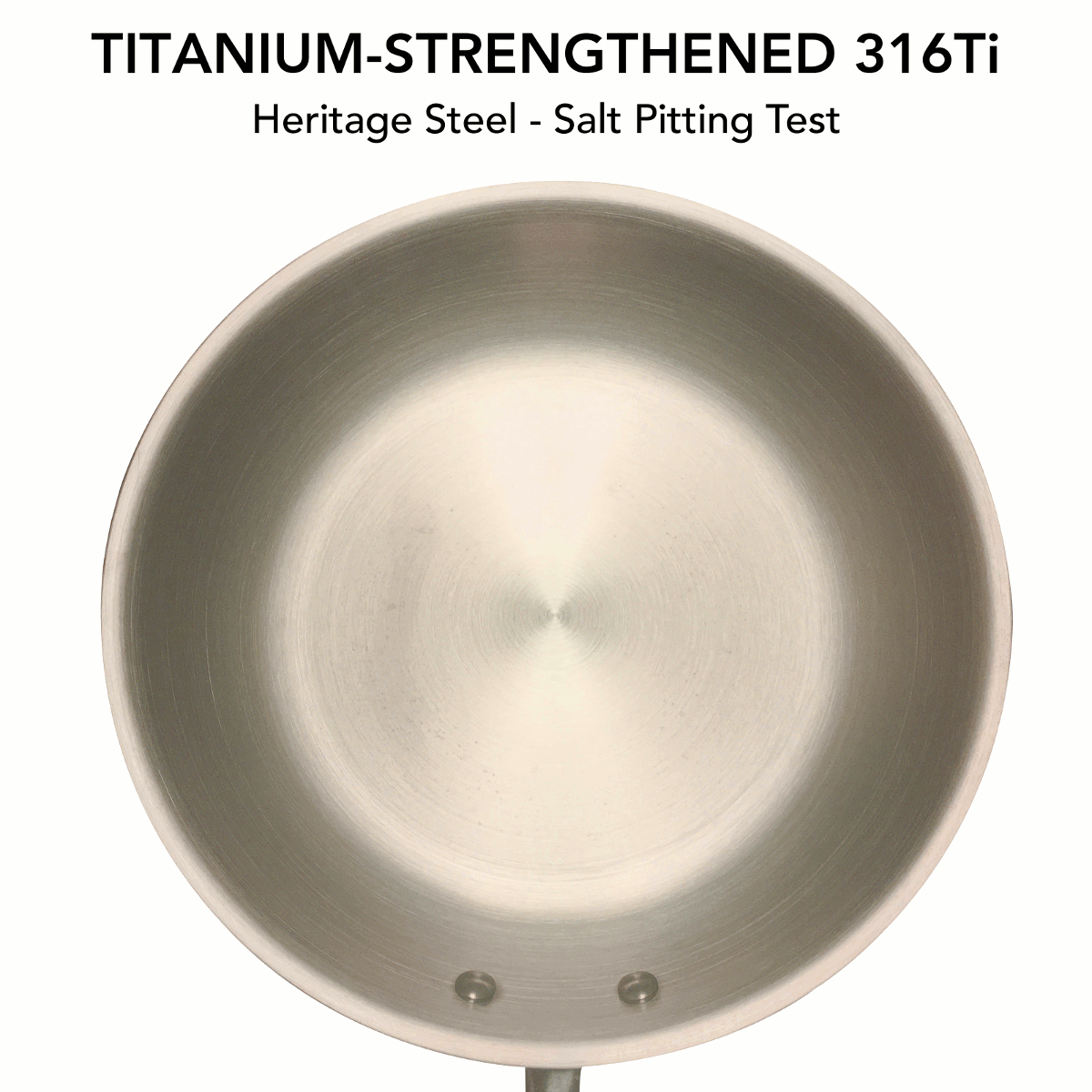What Makes Healthy Cookware?
How can your choice of cookware affect the food you cook?
- Nonstick and ceramic coated cookware can chip and flake into your food, or degrade and release toxic fumes at high temperatures. Metal leaching can occur after the coating is compromised.
- Cast iron and carbon steel can rust and leach metal into your food. The pan’s seasoning can also release into your food when cooking with acidic ingredients.
- Aluminum and copper cookware will leach potentially dangerous metals into your food.
- The most common types of stainless steel cookware are subject to corrosion, salt pitting, and can leach metal.
What is metal leaching?
Metal leaching occurs when metal corrodes or pits during the cooking process, usually with acidic or salty foods. Metals such as cast iron, carbon steel, aluminum, and copper are especially prone to corrosion.
When corrosion or pitting occurs, small bits of the metal break away and can enter the food you’re cooking. In addition to potentially affecting your health, over time this can degrade the cooking performance and beauty of your cookware.
While stainless steel is better at resisting metal leaching than other types of cookware, the typical 18/10 (304) grade of stainless steel used in most cookware can still leach metals into your food.

Our Solution
We use a special grade of surgical stainless steel called 316Ti that adds titanium and molybdenum to strengthen the steel alloy. This alloy is better at resisting corrosion from acidic sources than the typical 304 (also known as 18/10) stainless steel, and is 5-10 times more resistant to salt corrosion than 304 stainless steel.
Specifically, it is shown to have the following advantages:
[316Ti] austenitic stainless steel exhibits higher resistance than Cr-Ni [18/10] grades against generalized and atmospheric corrosion.
[316Ti] is more resistant to pitting and crevice corrosion than [18/10]. Conventional Cr-Ni [18/10] stainless steels can be used in chloride media containing up to 200 ppm, while those of the Cr-Ni-Mo [316Ti] group can be used in contact with solutions up to 1000 ppm of chloride ions.
Titanium-Strengthened
The added titanium in the 316Ti alloy strengthens and stabilizes its chemical bonds, making it the best solution for resisting metal leaching. To illustrate the difference, we tested the resistance to salt pitting corrosion in typical 304 stainless steel versus the 316Ti alloy we use in our cookware:

Over time this salt corrosion will eat away at the outer 304 layer and expose the aluminum beneath, enabling further metal leaching.
What is the salt pitting test?
To test Heritage Steel cookware against the competition, we followed these steps:
- Add 200 grams of water and sprinkle evenly 8 grams of salt to a room temperature pan
- This concentration of salt reflects a high yet realistic scenario that would occur during cooking, e.g. boiling pasta or reducing a sauce
- We used a 10” fry pan for this test
- Turn on induction burner and cook at 260 Fahrenheit for 7 minutes
- Repeat for each pan 3 times, rinsing and letting the pans cool between each round
Why does it matter?
Other cookware manufacturers make claims to be “chemical free,” “natural,” or “non-toxic”; making intentionally vague claims in order to prop up their products. We prefer to be honest and detailed, laying out the exact technical differences that we’ve chosen in order to improve our cookware.
While there is clear evidence that issues like chipping and metal leaching do occur with cookware of different kinds, there unfortunately is not much evidence about the long-term health effects of those issues. Most studies have found that metal leaching in cookware does not increase intake beyond recommended levels.
Regardless of the possible health benefits, there are other reasons to use highly durable and non-reactive cookware:
- Performance: We guarantee our cookware for a lifetime of use. The 316Ti surface protects against corrosion and pitting, meaning that it will show the same cooking performance 20 or 30 years down the road as it did the day you purchased it.
- Sustainability: A major drawback of all types of nonstick cookware is that they will wear out over time. That means every couple of years, you will have to throw out your pots and pans and start over. While the manufacturers of that kind of cookware certainly appreciate the repeat purchases, it isn’t great for the environment or for your pocketbook.
- Flavor: In our cookware you can sear, deglaze, simmer, and more, using your skills as a cook to build flavor using good ingredients. You don’t need to worry about introducing off flavors from metal leaching or stripping away seasoning on your pan.









